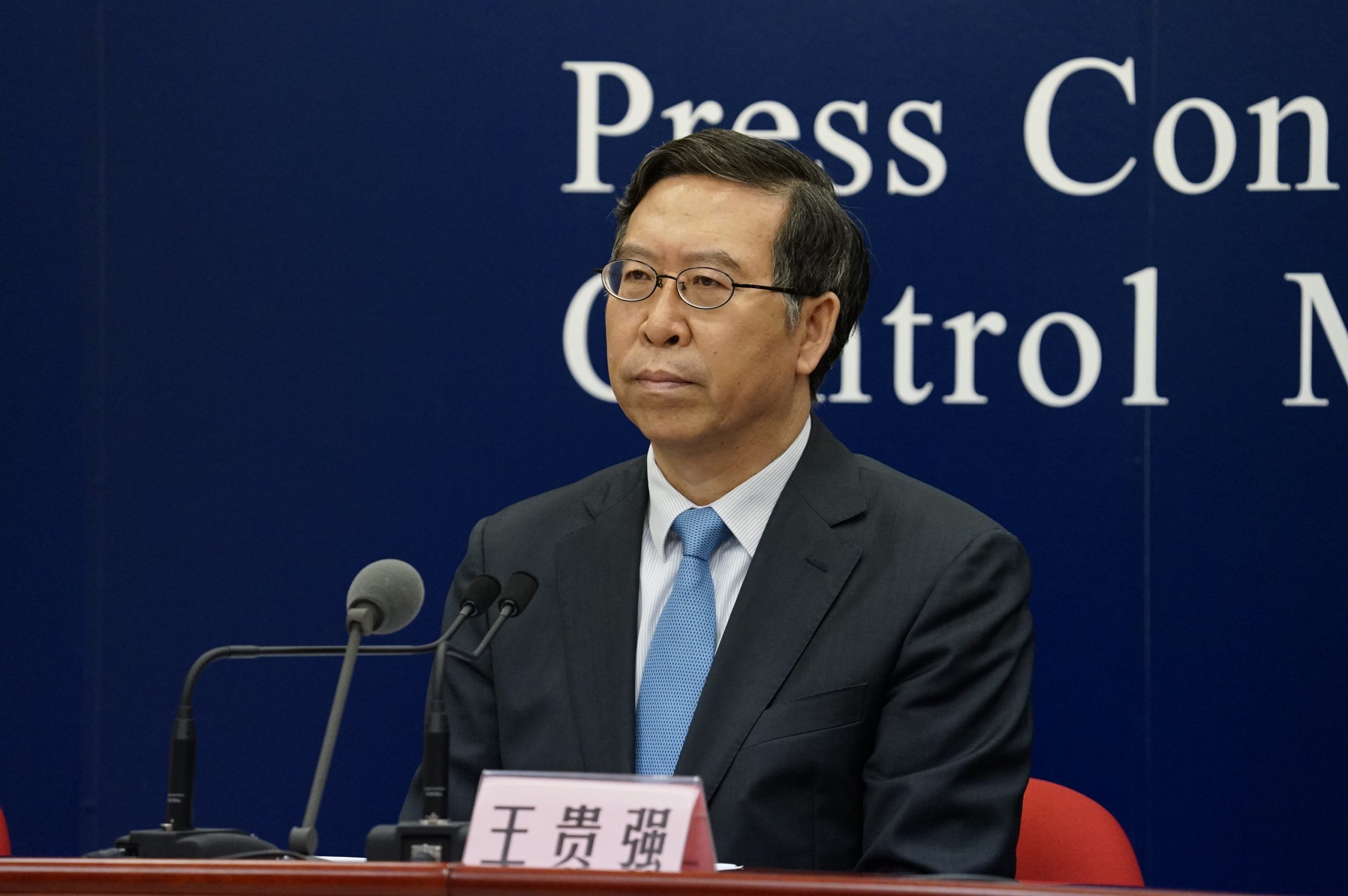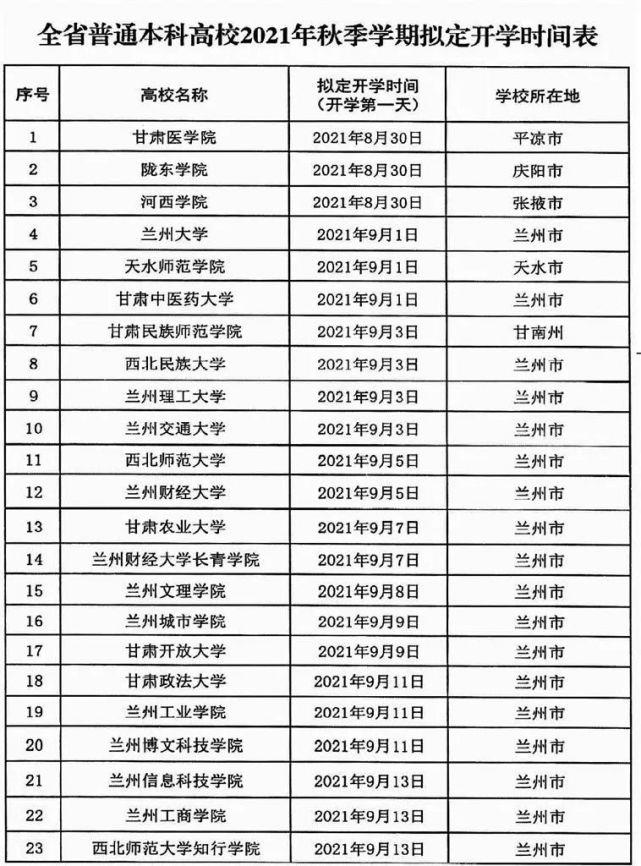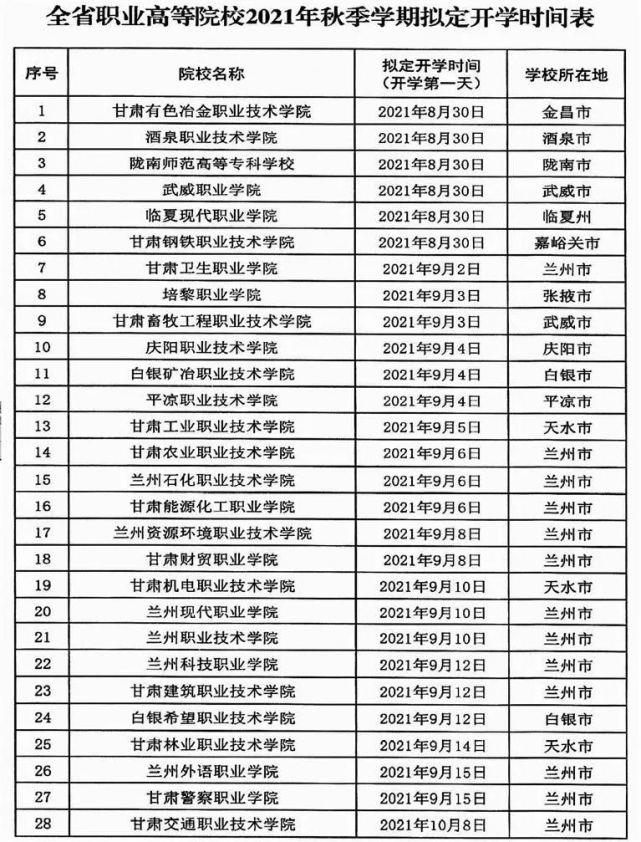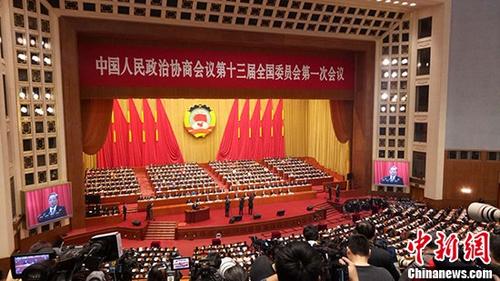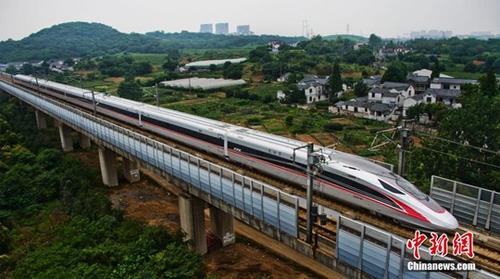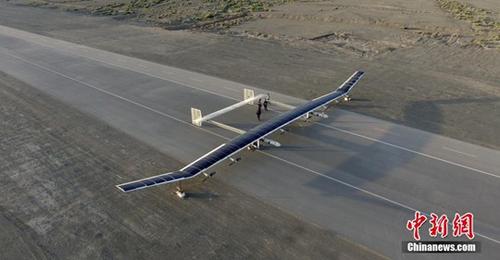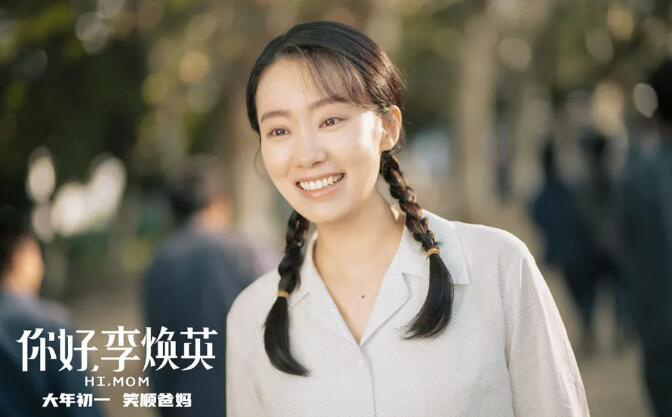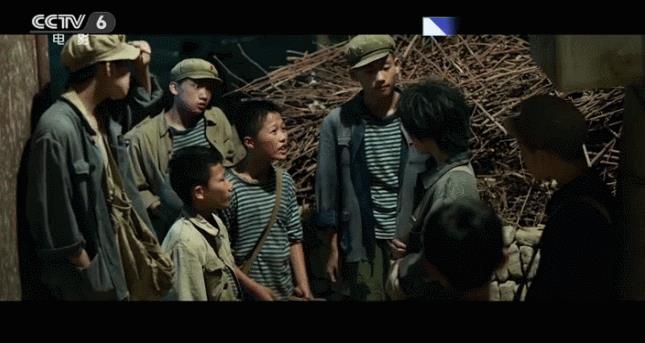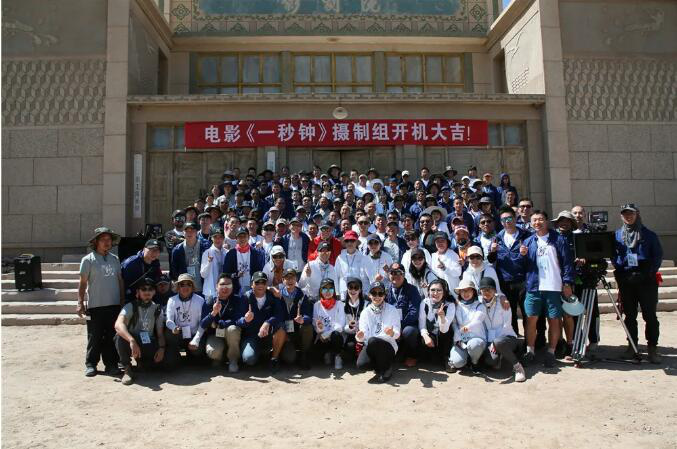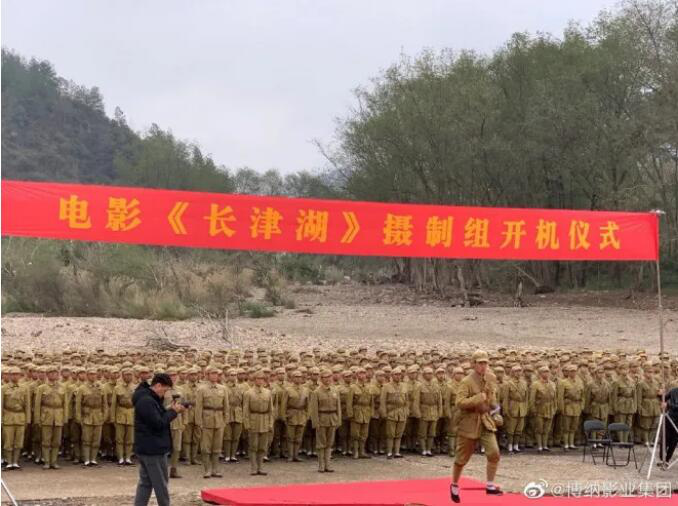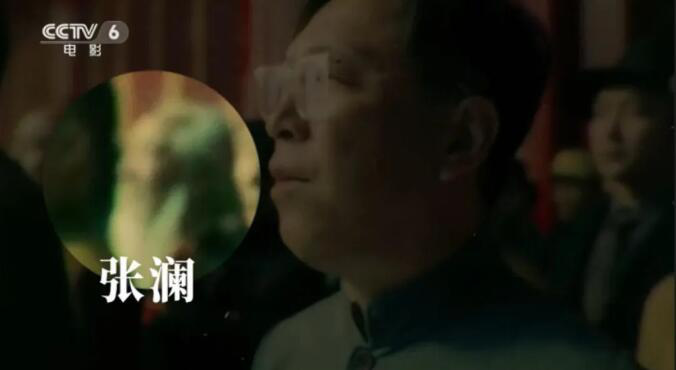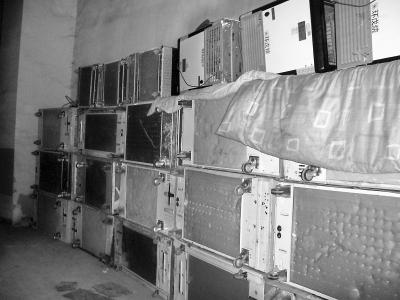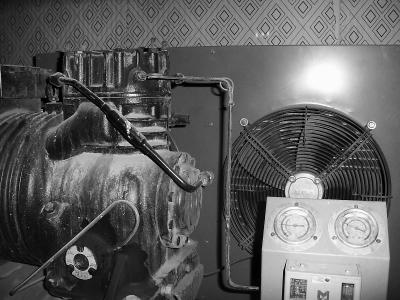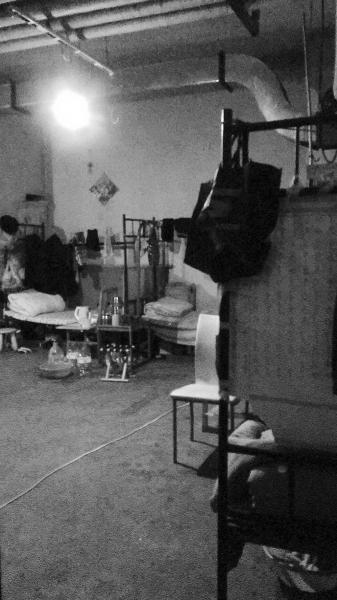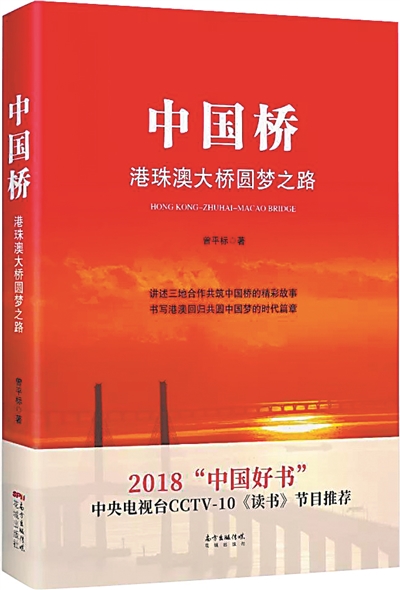(A) time is a constant, but also a variable of the endeavor.
“2013.11— 2016.11 ",comprehensively deepening reform has gone through three years. Three years is short, but under the leadership of the CPC Central Committee with the Supreme Leader as the core, countless changes are taking place on the land of China, and the strength of hundreds of millions of people is gathering and expanding into a special unit with the essence of China’s modernization process.
In the past three years, China has entered a new "reform time". Since the 18th National Congress of the Communist Party of China, a new wave of reform has surged. In November 2013, the Third Plenary Session of the 18th Central Committee of the Communist Party of China was held, which made a general arrangement and general mobilization for comprehensively deepening reform, and sounded the reform assembly number. The Fourth Plenary Session of the 18th CPC Central Committee opened a new era of comprehensively administering the country according to law. Reform and the rule of law go hand in hand, break through and complement each other. The Fifth Plenary Session of the 18th CPC Central Committee laid out the "Thirteenth Five-Year Plan" with a new development concept, which played a "double play" of reform and development at the decisive stage of building a well-off society in an all-round way. The Sixth Plenary Session of the Eighteenth Central Committee of the Communist Party of China made new arrangements for the comprehensive and strict administration of the Party and started a new journey of Party building under the new situation.
In the past three years, China has realized a new "reform vision". "If comprehensively deepening reform is compared to building a building, these three years are three years of tamping the foundation, selecting materials and preparing materials, and erecting columns and beams. This year, we will strive to build the main frame." The words of the Supreme Leader General Secretary are confident and powerful.
From the bronze statue of Deng Xiaoping in Lianhua Mountain, Guangdong Province, to the seventh meeting place of the Party in Yang Jialing, Shaanxi Province, and then to the wheat field in Xiaogang Village, Fengyang, Anhui Province … … The overall pattern and context of comprehensively deepening reform have become increasingly clear. The economic system, political system, cultural system, social system, ecological civilization system and party building system have been comprehensively reformed, and landmark and pillar reforms in various fields have been basically launched, and breakthroughs have been made in important areas and key links. When many countries bemoan the difficulty in developing a new engine, they are surprised to find that the "four beams and eight pillars" of China’s comprehensive deepening reform are springing up.
Choose China’s own destiny and respond to the world’s development problems. On the "key journey" to realize the Chinese dream, the most important governance reform in contemporary China is gaining ground, and the most magnificent picture of reform in the new century is slowly unfolding. Today, China has stood at a new historical starting point of comprehensively deepening reform and increasing new impetus for economic and social development.
(2) "New Awakening, New Long March", as some people describe the new governance bureau in the past three years. Reform is a profound revolution, which changes the system and mechanism, moves vested interests, and requires courage, perseverance and resolute style.
From comprehensive sowing in the first year of deep reform, the second flowering, to comprehensive efforts and in-depth promotion in the key year, and then to the year of tackling key problems, erecting columns and beams, and making bold progress … … In the past three years, the CPC Central Committee with the Supreme Leader as the core has dared to try, break and stand, and scored high marks in the "big exam" of reform.
— — The real knife is a real gun, dare to "show the sword", and comprehensively deepen the reform and leave a "hard bone."
The reform of the salary system for the heads of state-owned enterprises was initiated and implemented; The overall plan for ecological civilization reform was unveiled; The pilot project to standardize the behavior of leading cadres’ spouses, children and their spouses in doing business has been carried out in a solid manner; The record, notification and accountability system of leading cadres’ intervention in judicial activities and handling of specific cases was formally established; The new pattern of general management of military commission, main battle of theater and main construction of military services was born, and the organizational structure of the army achieved historic changes … … Breaking through the barriers of ideological concepts and the barriers of solidification of interests, the reform has cracked a number of "long-standing problems" that have been discussed for many years, with great resistance and long-term difficulties.
— — The blade is inward, dare to "break the wrist", comprehensively deepen the reform and overcome the "breakthrough".
The central government’s pricing items were reduced by 80%, the local government’s pricing items were reduced by half, and the price reform was drastic; Sun power list, push the openness of government affairs, and the construction of a government ruled by law is steady; The management mode of pre-entry national treatment plus negative list is implemented for foreign investment, and the experience of Shanghai Free Trade Zone is replicated and promoted throughout the country … … Jumping out of the box and overcoming the constraints of departmental interests, the reform has seized the "bull nose" involving multiple departments and fields.
— — Real money and silver, dare to make "real moves" and comprehensively deepen reforms have highlighted "gold content".
The comprehensive reform of the college entrance examination was successfully implemented, and more rural children can attend good universities; Deepen the reform of the medical and health system, rationalize the price comparison of medicines, and promote graded diagnosis and treatment, so that more patients will no longer "tolerate minor illnesses and delay serious illnesses"; Fully liberalize the two children and optimize the population structure; The reform of the household registration system has been firmly promoted, and the household registration book is no longer a high wall that blocks urban and rural mobility; The reform of public security has been deepened in an all-round way, and it is more convenient for people without hukou to register their hukou, apply for identity cards in different places, take driver’s licenses and do vehicle inspections … … To improve people’s livelihood and well-being, and to keep an eye on fairness and justice, the reform has played a set of combination boxing of "caring for the people’s suffering and eliminating the people’s harm", giving the people a heavy "sense of gain".
"The sea pressure on bamboo branches is low, and the wind blows the corner of the mountain." At the closing of the Third Plenary Session of the 18th CPC Central Committee three years ago, there were many doubts about China’s 336 reform tasks in overseas public opinion. Today, their evaluation is: "Looking around the world, no country can push forward the reform in a way that promises to be done and races against the clock like China today."
(3) Reform is the way for a country and a nation to survive and develop. Looking at the new round of reform in a larger space-time coordinate, what is its historical position? How to judge its historical value?
System and governance are fundamental issues that determine the nature and competitiveness of a country. Throughout the ages, most social unrest and regime change can be attributed to the failure to form an effective national governance system and governance capacity.
Judging from the historical process since the birth of socialism, how to govern a brand-new society like socialism has not been well solved in the past world socialist practice. Marx and Engels did not have the experience of comprehensively governing a socialist country; Lenin founded the first socialist country in the world, but he died without further exploration. The Soviet Union has been brilliant in its governance for more than 70 years, but various social contradictions and problems have accumulated over time, and it is difficult to return, and finally it cannot escape the fate of national death and political interest.
From the historical process of social change in China since modern times, the gunfire of the Revolution of 1911 in Chengtou, Wuchang shattered the autocratic monarchy system that lasted for thousands of years in old China, but the following constitutional monarchy, restoration of monarchy, parliamentary system, multi-party system and presidential system, all kinds of national governance system schemes were defeated in reality. After the founding of New China, our party has made active explorations in governance practice, and has also encountered serious twists and turns. Since the reform and opening up, our party has begun to think about the national governance system from a brand-new perspective, and the institutional issues have been raised to the height of "fundamental, overall, stable and long-term", and finally found the right path and opened up a new road.
The smooth progress of China’s modernization requires us to promote the Socialism with Chinese characteristics system to be more mature and stereotyped, which is a major historical task before the people of the Communist Party of China (CPC). China’s socialist practice has gone through the first half, we have established the basic socialist system and carried out reforms on this basis, and now we have a good foundation; In the second half, our main historical task is to improve and develop the Socialism with Chinese characteristics system, so as to provide a more complete, stable and effective system for the development of the cause of the party and the country, for the happiness and well-being of the people, for social harmony and stability, and for the long-term stability of the country. This project is extremely grand, and it can’t be adjusted piecemeal, nor can it be patched up. It must be a comprehensive system reform and improvement, and it is the linkage and integration of reforms and improvements in various fields, which will form an overall effect and achieve an overall effect on the modernization of the national governance system and governance capacity.
It is this kind of historical value and historical responsibility that makes the comprehensive deepening of reform without hesitation and forge ahead. The most precious thing is that the CPC Central Committee with the Supreme Leader as the core sublimated the practical achievements and institutional achievements of reform into ideological achievements, and formed a reform concept of rallying consensus, guiding practice and leading the future. This reform idea focuses on solving the problem of system modernization that concerns the long-term stability of the party and the country, and makes a new and incisive exposition on the reform motivation, reform objectives, reform subjects, reform methods and reform implementation, which greatly enriches and develops Socialism with Chinese characteristics’s reform theory and provides scientific theoretical guidance and action guidance for deepening reform and opening up under the new historical conditions.
(D) "Reform and opening up is a key measure to determine the fate of contemporary China, and it is also a decision to achieve ‘ Two hundred years ’ The key to achieving the goal and realizing the great rejuvenation of the Chinese nation "— — On the issue of "why change", the understanding of the reform concept is more profound.
Deepening reform in an all-round way is in line with the trend of the world. After the international financial crisis, the United States launched re-industrialization; After the European debt crisis, Europe revisited rebalancing … … A new round of scientific and technological revolution and industrial transformation is gestating, and change is the general trend and the will of the people. We can’t do it without reform, nor can we do it if the reform is slow. If we miss the window of reform, it will cost more, cost more and have more sequelae in the future.
Deepening the reform in an all-round way is to meet the difficulties and solve the practical problems in China. The problem is the voice of the times and the driving force of reform. Reform is forced by problems, and it is deepened by constantly solving problems. In recent years, we have created the "China Miracle" that attracts worldwide attention. However, the pride of soaring is accompanied by growing pains — —
Many "dilemmas" need to be solved urgently: we will face the challenge of "middle-income trap" before we can recollect the joy of entering middle-income countries; To adjust the structure, we must drastically reduce production capacity and leverage, which can protect people’s livelihood and keep the bottom line and stabilize employment; To get rid of the chronic disease of the administrative examination and approval system, it is necessary to take drastic measures to eliminate the disease and punish the disorder, and to transform the government functions, it is necessary to pay attention to procedural justice and be well-founded in the law … … There are many contradictions, constant cutting and chaos.
Many "group anxieties" need to be alleviated: on the one hand, education is developing rapidly, but on the other hand, the educational channels are still not smooth; On the one hand, doctors’ overwork income is not high, on the other hand, it is difficult and expensive for patients to see a doctor. The pockets are bulging, why are some unfair distribution? There are many houses, why can’t some of them afford to live? The road is wider, why is it harder for some people to commute? … … People are more persistent in their pursuit of fairness and justice.
After development, there are no fewer problems than when it is not developed. At present, China still faces a long "list of problems": unbalanced, uncoordinated and unsustainable development is still outstanding, the ability of scientific and technological innovation is not strong, the industrial structure is unreasonable, the development mode is extensive, the gap between urban and rural areas and the income distribution of residents is large, there are many problems that affect the vital interests of the people, and the situation of anti-corruption struggle is still grim … … Looking back, we have solved a series of problems in the development of the cause of the party and the state by means of reform; Facing the future, we must continue to deepen reform and opening up, further emancipate our minds, emancipate and develop social productive forces, and emancipate and enhance social vitality in order to solve all kinds of problems faced by development, resolve risks and challenges from all sides, give full play to Socialism with Chinese characteristics’s institutional advantages and promote sustained and healthy economic and social development. There is no other way.
Deepening reform in an all-round way is to seize the opportunity and seize the commanding heights of future development. Looking ahead, comprehensively deepening reform is the key link to coordinate and promote the "four comprehensive" strategic layout and realize the great rejuvenation of the Chinese nation. Reform is an important practice of building a well-off society in an all-round way, a sister chapter that goes hand in hand with the rule of law in an all-round way, and the only way for the party to purify itself, improve itself, innovate itself and improve itself. Reform runs through all fields of the "four comprehensive" strategic layout, which is both a driving force and a cohesive force, a method path and a spiritual core. Only when the reform sails can the great ship "China" break the waves towards the Chinese dream.
(5) "Improve and develop the Socialism with Chinese characteristics system and promote the modernization of the national governance system and governance capacity" — — On the issue of "where to change", the reform goal is more clear.
It is an objective requirement for the reform process itself to expand forward, and it reflects the deepening and systematization of our party’s understanding of reform.
"The previous sentence" is the fundamental direction that must be adhered to in comprehensively deepening reform. To clarify this direction is to tell the world loudly that no matter what and how you change it, you must follow the Socialism with Chinese characteristics road, not any other road; We should uphold and develop Socialism with Chinese characteristics, not engage in other doctrines. "Some things that cannot be changed will not be changed for a long time." We should learn from the beneficial achievements of human political civilization, but we should not copy the political system model of other countries, and we will not accept any foreign bossy preaching, "We cannot let others experiment on our lives." General Secretary of the Supreme Leader said forcefully, standing on the vast land of 9.6 million square kilometers, sucking the cultural nutrients accumulated by the long struggle of the Chinese nation, and possessing the majestic power of 1.3 billion people in China, we have gone our own way, with an incomparably broad stage, an incomparably profound historical background and an incomparably strong determination to move forward. Socialism with Chinese characteristics, this road can make sense and go far. To deepen reform in an all-round way is to make this road more practical and better. Every Chinese should have such institutional confidence.
"The latter sentence" is the proposition of the times and the clear direction of comprehensively deepening reform. We have talked about many modernizations, such as agricultural modernization, industrial modernization, scientific and technological modernization and national defense modernization, but a modern country was born just by splicing these modernizations together. Social system is the key factor of modernization reform. Only by raising the connotation of modernization to the height of managing modernization and making the perfection and development of the system the overall goal of reform can modernization move forward steadily and continuously. We must never underestimate the advantages, resilience, vitality and potential contained in the Socialism with Chinese characteristics system, but we should also see that compared with China’s economic and social development and the requirements of the people, compared with the increasingly fierce international competition in today’s world, compared with the realization of long-term national stability, we still have many "shortcomings" in the national governance system and governance capacity. We must adapt to the general process of national modernization, realize the institutionalization, standardization and proceduralization of the governance of the party, state and society, and constantly improve the ability to effectively govern the country by using the Socialism with Chinese characteristics system.
"Two sentences" is complete. "We are deepening reform in an all-round way, not because the Socialism with Chinese characteristics system is not good, but to make it better; When we say that we must strengthen institutional self-confidence, we should not rest on our laurels, but constantly eliminate the shortcomings of institutional mechanisms and make our system mature and lasting. " This important conclusion of the Supreme Leader General Secretary profoundly reveals the dialectical relationship between comprehensively deepening reform and institutional self-confidence. Without firm institutional self-confidence, it is impossible to have the courage to deepen reform in an all-round way. Similarly, without continuous reform, institutional self-confidence cannot be thorough and long-lasting.
(6) "To comprehensively deepen reform, we must take promoting social fairness and justice and enhancing people’s well-being as the starting point and the end result, so that the people can have more sense of gain" — — On the issue of "for whom", the direction of reform is more distinct.
Mr. Lu Xun once said, "Most forces are great and important. If reformers who are interested in it do not know people’s hearts well and try to guide and improve them, no matter what kind of lofty ideas, romance and classicality, they have nothing to do with them, but only a few people admire each other in their study." The complexity, sensitivity and arduousness of our reform today are no less than those of more than 30 years ago. Only by grasping the ever-changing real public opinion in complex China and giving people more sense of gain can the reform always resonate with the people’s voices and not get lost in the tide of the times.
A sense of gain is a sense of echo.
"the people have a call, and the reform should be done." What the people care about and expect, what the reform must grasp and promote. The most prominent problems reflected by ordinary people are education, employment, old-age care, medical care, etc. The reform should start from these problems and take the interests of the masses as the direction of efforts, and we must move forward no matter how difficult it is. We should be good at finding the breakthrough point of reform from the focus of social concern and the difficulties of daily life. Some production and business activities that the masses engage in in in large quantities, such as setting up stalls in cities, are beyond the current laws and regulations, but they are also reasonable and reasonable, reflecting the needs of the masses. It may be futile to block them, but it may be effective to sparse them. Over the past 30 years of reform and opening up, many reforms have turned some things that the masses are doing but have no legal basis into legal things. As long as we find the balance of interests, we often find an important breakthrough in reform. Only by keeping your eyes down and your feet down can the ideas, decisions and measures of reform be grounded and popular, and better meet the demands of the masses.
A sense of gain is a sense of participation.
"The movement of Dapeng is not a feather; The speed of galloping is not enough. " Deepening reform in an all-round way can’t treat the masses as spectators, but should guide them to work together for reform. The people will always be the "protagonists" of reform.
Whether the reform can score high depends on the grassroots and the masses. Taking the feelings and recognition of the masses as the touchstone, we can test whether the reform is aimed at the focal length and hit the key; It can more accurately measure whether the reform measures can stand up, stand firm and continuously release positive energy.
A sense of gain is a sense of benefit.
Interest adjustment is an unavoidable problem in the process of reform. In the past, the reform was often "Pareto improvement", and most people can benefit from the reform. Now the reform is likely to be "Caldo improvement", and interest enhancement and adjustment coexist. This requires us to calculate the interest account of the reform, comprehensively evaluate the interest changes before, during and after the implementation of the reform, always put the interests of the masses first, coordinate the interest relations at all levels in all aspects, and be good at calculating big accounts, general ledger and long-term accounts, so that the results of the reform can benefit the most people. This means that "to build a well-off society in an all-round way, no region, no nation and no one can fall behind", and the temperature of reform is marked with the scale of the bottom line; It means not only having enough to eat and wear warm clothes, but also living with high quality and vigor, and realizing the overall improvement of the "five in one"; It means to make a big cake and divide it well, create a fairer social environment, and let the reform bring visible benefits to the people and bring hot hope.
(7) "Reform and opening up is an unprecedented brand-new undertaking, and we must adhere to the correct methodology and promote it through continuous practice and exploration" — — On the issue of "how to change", the reform method is more scientific.
Seemingly ordinary problems, in the reality of China, often become not so simple. In the eastern, central and western regions, urban and rural areas, "the development gap has even reached a century"; More than 1.3 billion people, more than twice the combined population of the United States, Japan, Germany, France and Britain, have different interests and even are difficult to understand each other. How can we comprehensively deepen the reform accurately and steadily? This requires mastering the scientific reform methodology and handling several major relationships.
— — Both top-level design and grass-roots exploration are needed to realize the benign interaction between "up" and "down"
Top-level design and grass-roots exploration are mutually exclusive and dialectical unity. When the reform goes to the deep water area, the old and new contradictions are entangled, and the interests are complicated. Top-level design, like "navigator" and "tractor", can break through the visual obstacle of "seeing only trees but not forests", guide the reform beyond the existing interest pattern and move forward along the scientific path. Grass-roots exploration and "crossing the river by feeling the stones" also have great practical significance. There is a big gap in the development level of different regions in China, so it is unrealistic to want to line up, quick march and be uniform on the reform issue. If we want to "cross the river" smoothly, we should encourage all localities to find different "bridges" and "boats" according to their own reality.
Top-level design and grassroots exploration should have a global view. Top-level design should plan the overall situation, but this kind of planning is not sitting in the office "planning", but full investigation, repeated argumentation, timely adjustment and scientific decision-making. Grassroots exploration should also take into account the overall situation, and give full play to the demonstration, breakthrough and driving role of the pilot in overall reform.
— — It is necessary to make overall plans, but also focus on breakthroughs and pay attention to the systematicness, integrity and synergy of reform.
Without the innovation of tax adjustment, public finance and pension system, the reform of income distribution will inevitably be difficult to move forward; Without the protection of household registration, education, medical care and housing, it can only be a distant dream for migrant workers to become new citizens … … The deeper the reform is, the more relevant and interactive the reforms in all fields and links will be. Each reform will have an important impact on other reforms, and all of them need to be supported by other reforms. If it is only "linear deployment" and "single-soldier advance", and the first move and the second move are not considered comprehensively, the reform will inevitably be constrained by each other. Only by insisting on overall planning, integration and overall promotion can all reform measures cooperate with each other in policy orientation, promote each other in the implementation process and complement each other in reform effectiveness.
However, "all-round" does not mean spreading pepper noodles, not exerting force evenly, but focusing on the main aspects of major contradictions and contradictions, focusing on important areas and key links, finding out the hard bones to be gnawed, marking the dangerous beaches to be involved, exerting force at the key points, and doing "all at once".
— — We should not only promote reform under the rule of law, but also improve the rule of law in the reform and seek the best combination of reform and rule of law.
Only by solving problems within the framework of the rule of law, seeking the "greatest common denominator" under the rule of law, and ensuring that major reforms are based on the law, can we ensure that the reforms are orderly, unchanged, and stable. Reform focuses on breakthroughs, and the rule of law focuses on norms. To deepen reform in an all-round way, we must be brave in "breaking", that is, breaking through the shackles of ideas and breaking down the obstacles of institutional mechanisms. However, "breaking" is not borderless and bottomless, and we must move forward along the track of the rule of law. The ultimate goal of "breaking" is to "establish", that is, to form a set of more complete, stable and efficient laws and systems. It is incorrect to think that reform is to break through the "bondage" of law, and that reform should be on the road and law should give way.
Only when legislation actively adapts to the needs of reform and development can we give full play to the role of the rule of law in safeguarding and promoting reform. Practice has proved that the mature reform experience and effective reform measures should be promptly upgraded to laws and regulations; Conservative and rigid, which has become a stumbling block in development, should be revised as soon as possible; Laws and regulations that are outdated and have long been out of line with reality should be abolished decisively. The view that the law is to maintain "ultra-stability" is also incorrect.
— — It is necessary to push forward the reform plan quickly, but also persevere in the implementation of the reform and adhere to the high unity of "taking advantage of the situation" and "taking reality".
Deepening the reform in an all-round way is a systematic project, with many clues and heavy tasks. We must first concentrate on pushing out the main reform measures, lift the momentum, and then implement them one by one, which is determined by the reform environment and implementation conditions. If we are slow and step by step, not only will time not be allowed, but also some major reform measures will not be implemented systematically. This requires us to pay attention to the reform plan and the implementation of the reform in the future reform, and the adopted plan should be "inspected" to ensure that it is in place.
(8) "Do a good job in the implementation of the reform in the spirit of nailing nails, and focus on it and grasp it repeatedly until it achieves results" — — On the issue of "how to change it in place", the reform attitude is more determined.
A new wave of reform has started, but some localities and departments are still lazy, slow, fake and will not change. Some people don’t know enough: some are "single-minded" to overcome difficulties and push forward; There are also "dubious" people who follow the tide; Others "half-heartedly" delay or even hinder the reform by moving their own interests. Some are ineffective in implementation: some follow up the meeting with meetings and implement documents with documents, "only to the knees"; There are also plans to let go, not to guide, not to supervise, and to "manage students regardless of raising"; There is also a lack of system integration, the lack of convergence of laws and regulations, and the lack of matching related reforms, which restricts the maximization of reform effects.
To truly take root in reform, we need to be a reform promoter, support reform, dare to take responsibility, and be a good reform doer, grasp reform in our hands, implement it and achieve results.
Reform is important. We can’t regard reform as a mechanical and purely physical process, but we must see that reform is actually a human change. "If geometric axioms violate people’s interests, they will certainly be refuted." It’s normal to change the power in one’s hand, take advantage of the department, cut one’s own meat and touch other people’s cheese. It’s impossible to beat gongs and drums, be happy and easy, and cause people’s ideological activities and even fluctuations. If a reform plan is launched, there will be no response in the society, and it will be quiet, calm and stable, which only shows that the reform has not touched on deep-seated contradictions and problems. It is necessary to realize that reform is painful, but it will be painful if it is not reformed. As long as it is in line with national interests, national interests and people’s interests, as long as it is conducive to the implementation of the new development concept and as long as it is conducive to increasing the people’s sense of gain, it will be resolutely broken and resolutely reformed. Stones stand in the way, the weak are regarded as obstacles to progress, the brave as a ladder to progress, and the brave win at the critical moment of reform.
Reform focuses on hard work. One action is better than a dozen programs. At present, some reform measures are still stuck in meetings and remain on paper. We must practice the requirements of "three strictness and three realities", understand that the reform should be realistic, plan and implement the reform, and improve the penetration of the reform plan. We must never engage in empty talk, step on empty feet, and shoot dumb guns. It is necessary to establish a full-process, efficient and verifiable reform implementation mechanism: grasp the main responsibility and tighten the responsibility screw; Grasp the supervision and coordination, control the progress, check the quality, coordinate the contradictions and balance comprehensively; Grasp the effectiveness of reform, stimulate the vitality of development and enhance people’s well-being … … It is also necessary to establish an institutional mechanism that not only encourages innovation, praises the advanced, but also allows trial and error and tolerates failure, forms the orientation of employing people with reformers above and without reformers, and creates a strong atmosphere of wanting to reform, daring to reform and being good at reform.
Wherever the reform is promoted, the inspector will follow up. Reform and reform have made progress, and it is necessary to rely on inspectors to get through the joints, unblock the blocking points and improve the quality. We should pay close attention to inspectors, supervise tasks, progress and effectiveness, and supervise them in practice; If we look at understanding, responsibility and style, we must look at the key points. With strong inspectors, we will ensure that the reform direction set by the CPC Central Committee does not deviate, and that the reform tasks defined by the CPC Central Committee do not fail, and constantly improve the level of precision and refinement of reform.
(9) "There is only one real theory in the world, that is, one that is extracted from objective reality and proved in objective reality". The concept of reform is a beacon light, which leads the reform forward; It is also a gas station, injecting vitality into the reform.
On the road to revival, we have been running hard against the rising sun for decades, and finally we have reached the stage of decisive battle. Looking ahead, we are less than five years away from the first century goal, and only one-third of the journey is left from the second century goal. Whether it is to remove the institutional obstacles that restrict development or to optimize the governance structure, governance mechanism, governance concept and governance efficiency in an all-round way, we need the courage of a strong man to break the wrist and the determination of phoenix nirvana, dare to open the knife to stubborn diseases accumulated for many years, dare to touch on deep-seated interests and contradictions, and carry out the reform to the end. Only in this way, it is more explosive to sprint the first century goal and more durable to achieve the second century goal.
After nearly a hundred years of humiliation, invasion, war and unspeakable events, Chinese is preparing to embrace its long-awaited dream. Now, we are closer to the goal of the great rejuvenation of the Chinese nation than at any time in history, and we need the surging momentum brought by reform more than at any time in history.
